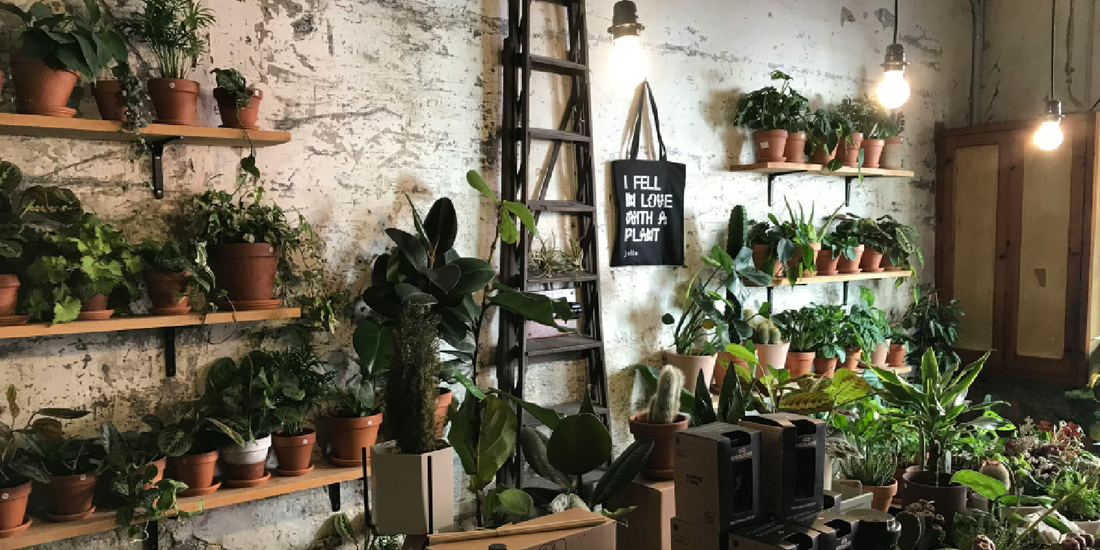
The Psychology of Green Spaces in the Home
Share
Designing a home that feels harmonious, inspiring, and restorative is not only about stylish furniture or tasteful art. Increasingly, interior psychology experts emphasize the role of green spaces—areas where plants, natural textures, and biophilic design principles come together to create a healthier living environment.
At amoyls, our philosophy centers on integrating natural beauty with modern lifestyles. Our VerdantGlow S-Shaped 8-Tier Plant Shelf with Grow Lights was created for people who want more than decoration—it’s a tool to cultivate well-being through greenery. In this article, we will explore how green spaces influence psychology, why they matter in home design, and practical ways to incorporate them into everyday life.
Why Green Spaces Matter: A Psychological Perspective
Humans are deeply connected to the natural world. This is explained by the biophilia hypothesis, proposed by biologist E.O. Wilson, which suggests that people are genetically predisposed to seek connections with nature.
When we live in urban spaces dominated by concrete, glass, and technology, this natural bond is disrupted. The introduction of greenery into the home helps restore balance, offering psychological benefits such as:
- Stress reduction: Studies show people experience lower cortisol levels after spending time near plants.
- Mood enhancement: Exposure to greenery improves happiness and decreases symptoms of depression.
- Attention restoration: Nature offers “soft fascination,” a gentle focus that refreshes cognitive capacity.
These outcomes explain why simply placing plants on a multi-tier plant shelf with grow lights can dramatically shift how a room feels.
Stress Relief and Mental Recovery
One of the strongest psychological benefits of greenery is stress reduction. Environmental psychology research reveals that even a short view of plants or natural landscapes can lower blood pressure and reduce heart rate.
This is why hospitals and clinics often incorporate indoor gardens and potted plants—they speed up recovery times. In the home, the same principle applies. A living room corner filled with plants on a structured stand becomes a mini restorative sanctuary, helping residents recover from daily stressors.
Productivity and Cognitive Performance
Green spaces also boost productivity and mental sharpness. In a widely cited study by the University of Exeter, workers were 15% more productive in environments with plants compared to lean, minimalist settings.
For home offices, this is a powerful insight. Remote professionals often struggle with maintaining focus, especially when working in confined urban apartments. A plant stand with grow lights, such as the VerdantGlow shelf, introduces a vibrant, stimulating environment that sustains concentration and reduces fatigue during long work sessions.
Emotional Stability and Green Therapy
Beyond stress and focus, greenery also provides emotional grounding. Horticultural therapy—the practice of caring for plants—has been used to treat anxiety and depression. Engaging with plants creates a sense of responsibility and continuity, which strengthens resilience against emotional challenges.
Even a small daily ritual, like watering plants or adjusting their position under grow lights, can become a therapeutic act. This consistency helps anchor individuals in routines that promote calm and mindfulness.
Green Spaces and Design Psychology
From a design psychology standpoint, plants influence perception in multiple ways:
- Color Psychology – Green symbolizes renewal, harmony, and stability. Surrounding yourself with greenery subconsciously reduces agitation and promotes optimism.
- Spatial Illusion – Vertical plant shelving draws the eye upward, making ceilings appear higher and rooms feel larger.
- Balance and Flow – Organic plant shapes soften harsh edges of furniture, creating visual balance and inviting movement in a room.
This explains why interior designers now integrate shelving solutions like the amoyls VerdantGlow Plant Shelf with Grow Lights as a core design element, not just an accessory.
Greenery and Sleep Quality
Bedrooms particularly benefit from greenery. Certain plants—such as lavender and peace lilies—are associated with improved sleep quality and relaxation. Green surroundings also trigger the parasympathetic nervous system, helping people transition into restful states.
Placing a plant stand near a bedroom window allows plants to receive daylight while grow lights supplement their needs at night. The result is a calming bedroom ecosystem that improves rest and recovery.
Sustainability, Identity, and Lifestyle
Green spaces don’t just change mood—they shape identity. People who fill their homes with plants often adopt more eco-conscious lifestyles. Indoor gardening cultivates patience, attentiveness, and responsibility, all of which align with sustainable living.
Owning a modern plant shelf like the VerdantGlow S-Shaped 8-Tier Plant Shelf signals a lifestyle choice: one that values both aesthetic sophistication and ecological awareness.
Practical Ways to Create Green Psychology at Home
- Start Vertical: Use multi-tiered plant shelves to maximize greenery in small spaces.
- Layer Variety: Combine tall leafy plants, cascading vines, and compact succulents for visual richness.
- Use Technology: Grow lights ensure healthy plant growth regardless of window access.
- Mix Functions: Add edible herbs for cooking alongside decorative ferns and flowering plants.
- Create Rituals: Dedicate 5–10 minutes daily to plant care as a mindful break from digital distractions.
- Anchor Spaces: Place greenery where psychological benefits are most needed—offices for focus, living rooms for calm, bedrooms for rest.
Case Examples: How Homes Transform with Greenery
- Urban Apartment: A single corner shelf filled with greenery becomes a stress-relief zone in a small studio.
- Home Office: A vertical stand with mixed plants helps combat digital fatigue during remote workdays.
- Family Living Room: Children learn responsibility by watering plants, and parents enjoy improved relaxation after work.
- Minimalist Homes: Greenery adds warmth and vitality to otherwise cold, minimal interiors.
Conclusion: Beyond Aesthetics
The psychology of green spaces proves that indoor greenery is far more than décor. It directly impacts health, emotions, and productivity. By thoughtfully incorporating plants into home design, people create spaces that support long-term well-being.
At amoyls, we designed the VerdantGlow S-Shaped 8-Tier Plant Shelf with Grow Lights to embody this philosophy. It blends modern design with the timeless human need for connection to nature, making green psychology accessible to every home.
Green spaces are not luxuries—they are necessities for balanced, mindful living. Whether your home is small or spacious, adding plants is one of the simplest, most impactful ways to transform not just your environment, but also your state of mind.
